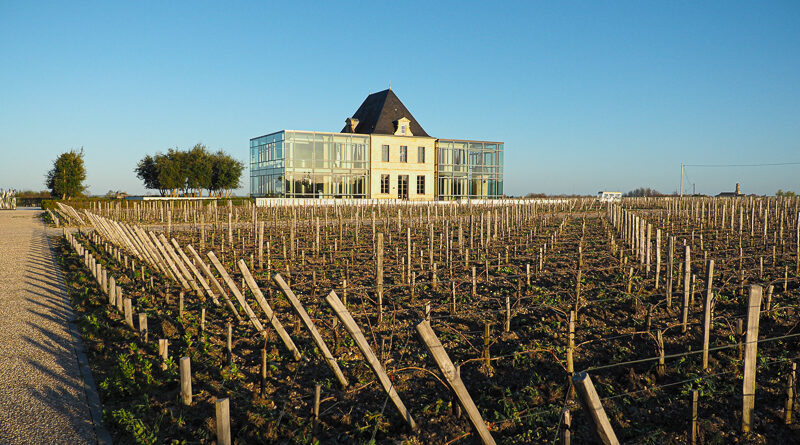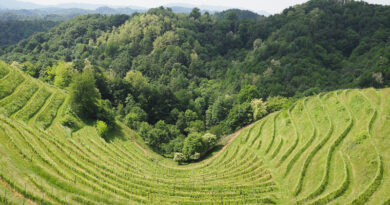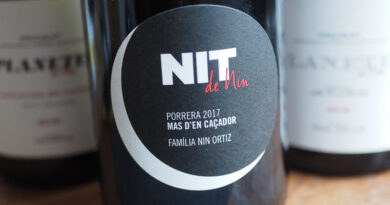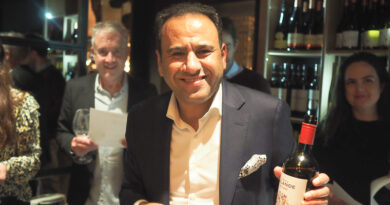In Bordeaux: Château Pedesclaux is a Pauillac star reborn
Pedesclaux is a Bordeaux Château that has been transformed. I visited in March 2019 with the director Vincent Bache-Gabrielsen and cellarmaster Jérôme Juhé to see the results of 10 years of investment and development.
Pedesclaux, a Pauillax fifth-growth, was purchased in September 2009 by Jacky Lorenzetti, but the new owners had been managing the vineyards that year and did the harvest. ‘We were frustrated by 2009 and 2010 not expressing the potential of the terroir,’ says Bache-Gabrielsen. ‘2011 was the first step in the evolution.’ Currently there are 50 hectares of vines, and half are now being managed organically.
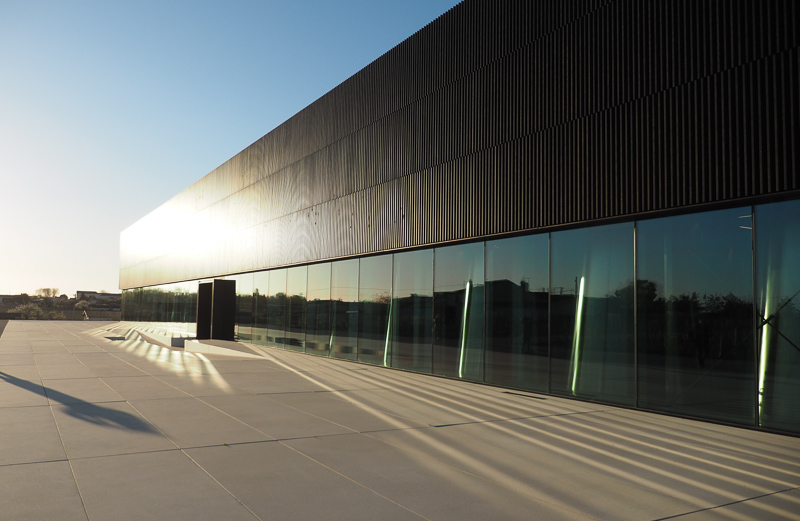
2014 was the first in the new cellars, and in that vintage they began working with Eric Boissenot as a consultant. He works with 53 different Châteaux, including some of the big names from Bordeaux.
The Lorenzetti family are Swiss French, and Jacky studied hospitality in Lausanne but never ended up working in restaurants. Instead, he decided to join his father working in real estate. They started from scratch and became the biggest in Europe. He sold the business in 2006, and they decided to begin new ventures. They started by buying a rugby team, Racing 92. ‘His wife Francoise, is from the eastern part of the Gironde,’ says Bache-Gabrielsen. ‘She’s involved with wine with her family. When they had the opportunity they decided to invest in the Médoc, targeting “sleeping beauties”: properties where lots of work had to be done.’
The first Lorenzetti purchase was Lilian Ladouys in Saint Estephe, just in front of Lafon Rochet. It is a Cru Bourgeois, and they have extended the vineyard to 80 hectares.
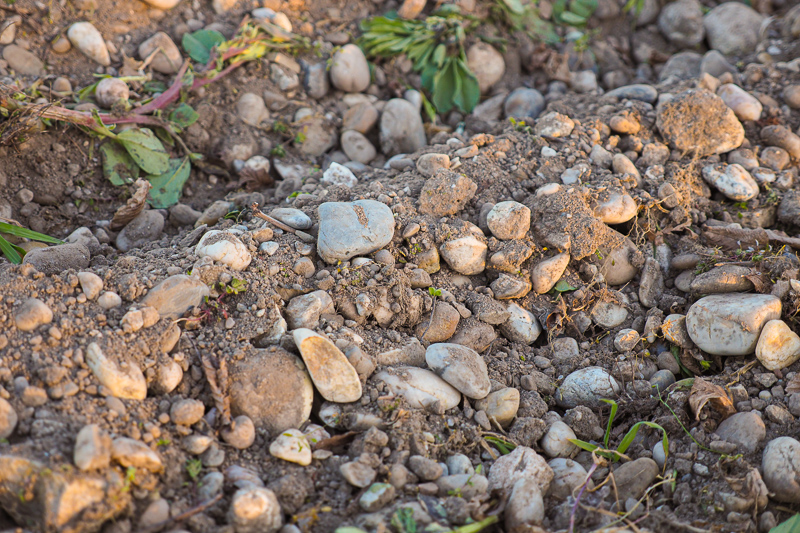
Pedesclaux is a classified growth (fifth) that dates back to 1810. It was initially a small property with 6.5 hectares of vines in 1855, but now it is 50 hectrares. The property is 500 m from the river and a neighbour of Pontet Canet. Lafite isn’t far away, too.
Pedesclaux made wonderful wines until 1965. The owner died and it got into some trouble. It was inherited by 14 people, and no investment was made in the vineyard and the cellar. So, for a while, the great terroir was yielding ordinary wines. In 2009 they sold to the Lorenzettis, who began the necessary work to bring this property back to its best.
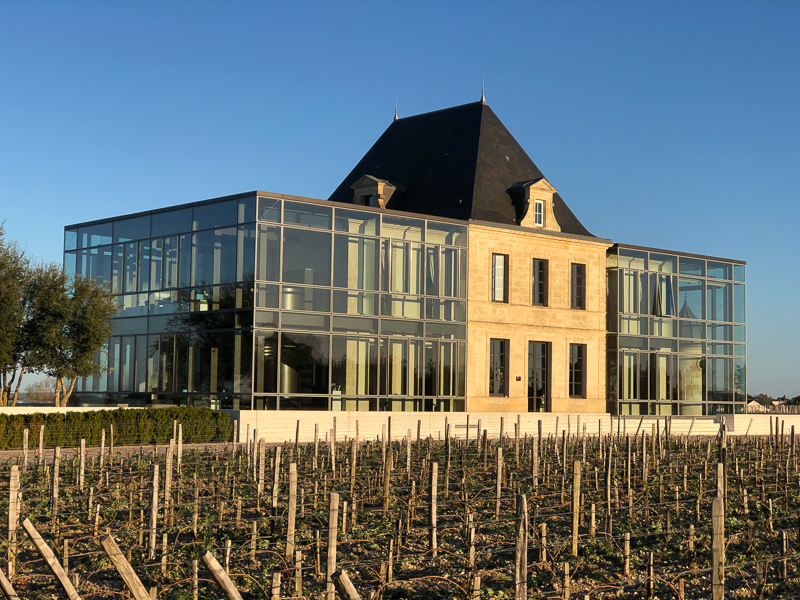
There are 19 different terroirs. 17 of them are gravel, and gravel and sand. Under the soils of Pauillac there is some limestone coming from Saint-Estephe. It is deeper. If you go down to 8 m the limestone is present. There are some clays, too. Because the property was expanded from its original 6.5 hectares, the plots are spread around and there are some terroir differences. This gives some complexity.
The vines are 56% Cabernet Sauvignon (they have removed some Merlot from ideal Cabernet terroirs and replanted them), and there is 4% Cabernet Franc. They’d rather have young vines properly planted, with good rootstocks, than old vines in the wrong place or with bad rootstock or from the wrong clones.
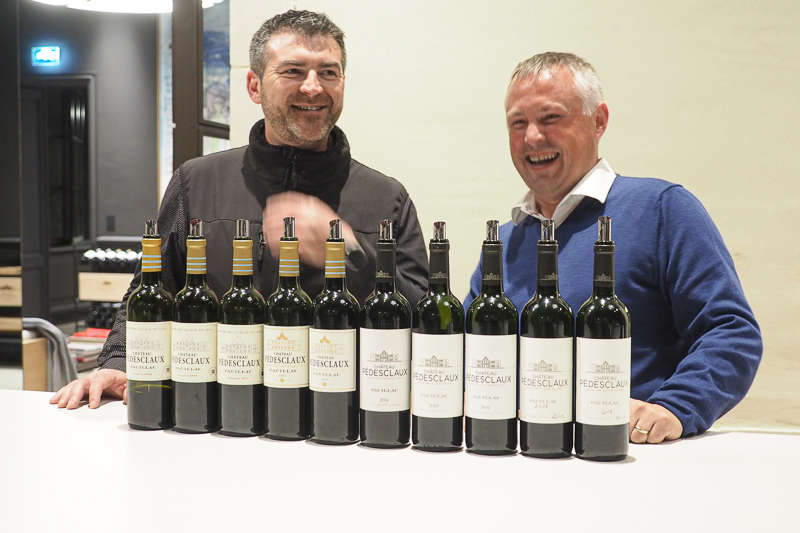
In 2010 they extended the vineyard by buying some vines in the northern part of the appellation, between Mouton and Lafite. There was, naturally, fierce competition for these plots.
At the same time they decided to renovate the cellar. ‘The idea was to have a good balance between the aesthetic and the technical,’ says Bache-Gabrielsen, ‘and technical came first.’ There are 19 different terroirs in the vineyard, and so the idea was to be able to have the cellar as closely adapted as possible to the terroir. This is why there are 58 different vats, allowing them to work as precisely as possible.
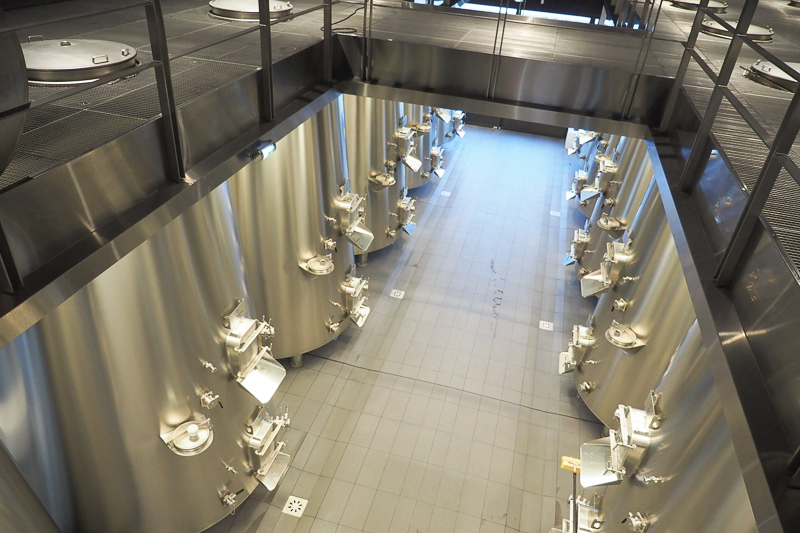
The tanks range from 60 -140 hl and there are eight different sizes. They blend just after malolactic fermentation, in December, and then go to barrel with the final blend. The other idea was to change the image of the Château: the cellar is designed so that visitors can see what is taking place. Many properties close their doors during vintage, but Pedesclaux want to receive people during vintage and let them see the work in action.
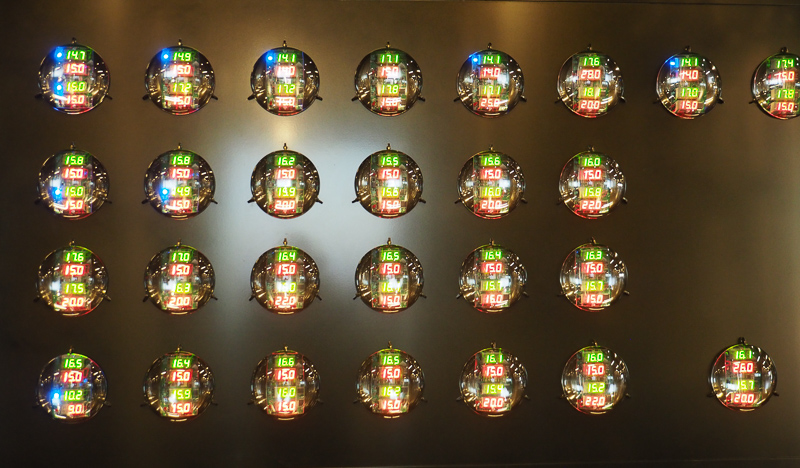
They double sort: after sorting clusters and destemming the berries are sorted also. The destemmer (Socma CUBE) comes from the south of France, and involves vibration and a series of fingers, separating stems and berries without damaging either.
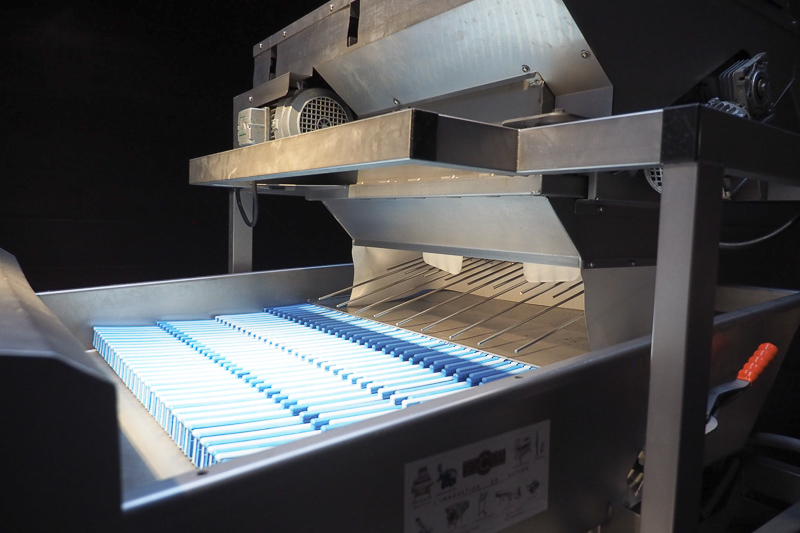
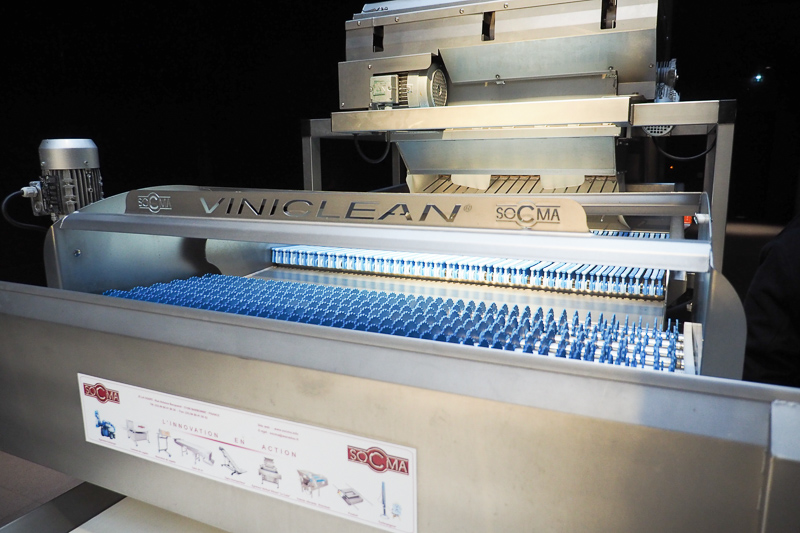
Before the grapes are processed they are kept in a cold room overnight. From 2009-15 they did no crushing, but they have decided that it’s less interesting for the extraction, and they had to extend the maceration to obtain what they wanted. They thought they were losing precision. So since 2016 they crush and reduce the time of the maceration from one-and-a-half to two months to two-to-three weeks. ‘It helps with the definition of the wine,’ says Bache-Gabrielsen.
They do a cold maceration before fermentation of 4-8 days. The idea is to have the softest extraction during this period. They start fermentation by raising the temperature to 18 C, and do two types of extraction. They are working with punching down and rack and return. It is softer and more precise than classical pump overs: the idea is to avoid any pressure on the cap during the extraction. They take the juice out, cool it down, and then using gravity return it to the skins like a big shower, so they have a big volume but at a low pressure. So there is no pumping. They also use punch down with a hydraulic device. There are no pump overs, which they think is too aggressive.
They have done five vintages here now, and it still looks new. ‘It looks good, but it is a technical winery first,’ says Bache-Gabrielsen.
THE WINES
Château Pedesclaux 2009 Pauillac, Bordeaux
Sweetly aromatic blackcurrant and black cherry fruit. Ripe, with a sleek, supple palate. Midweight, in a quite generous style (this is partly a vintage thing, I suspect). Nice weight here. 92/100
Château Pedesclaux 2010 Pauillac, Bordeaux
The first vintage to integrate the new vines. Supple and midweight with lovely balance, and some nice green leafy hints. Ripe berry fruits with some blackcurrant. This is well structured and elegant, and is drinking very well now. 92/100
Château Pedesclaux 2011 Pauillac, Bordeaux
This was the first step in the evolution. Lovely concentration and focus here. Shows some blackcurrant fruit with good structure and intensity. Grippy and gravelly with some firmness, showing some brightness. A firm, dense wine, and by the standards of this slightly weak vintage, pretty good. 92/100
Château Pedesclaux 2012 Pauillac, Bordeaux
Very expressive nose: gravelly and chalky with lovely blackcurrant fruit. The palate is fresh and gravelly with good concentration and definition. Such focus here, and good structure. 94/100
Château Pedesclaux 2013 Pauillac, Bordeaux
The last vintage in the old cellar, and it was a difficult one. Focused blackcurrant fruit with some raspberry notes. Nice grip to the fruit: firm and tannic with appealing juiciness. Shows good purity: it’s tight but focused. 92/100
Château Pedesclaux 2014 Pauillac, Bordeaux
They moved to the new cellar for the 2014 vintage and started working with Eric Boissenot. 53% Cabernet Sauvignon and 47% Merlot. Fine, supple and fresh with blackcurrant and cherry fruit. So expressive, with firm but fine structure, showing great precision and detail. This is a lovely taut, elegant wine. 94/100
Château Pedesclaux 2015 Pauillac, Bordeaux
This was the first vintage to include some Petit Verdot in the blend (this was planted in 2011). Floral blackcurrant and blackberry nose is bright and harmonious with fresh black fruits and good structure. Very lively and expressive with some depth, but also lovely freshness. Fine, harmonious and focused. An elegant style showing some richness. 94/100
Château Pedesclaux 2016 Pauillac, Bordeaux
Very pure, supple, fine and elegant with blackcurrant fruit at its core and nice structure. Has lovely harmony and elegance, but also density and structure. Tension and vitality here, and good grip and focus. Potential for development. 96/100
Château Pedesclaux 2017 Pauillac, Bordeaux (still in cask)
Some oak hints, but lovely definition to the sweet blackcurrant fruit. There’s some tannic structure here, too. Lovely focus. 94/100
Château Pedesclaux 2018 Pauillac, Bordeaux (still in cask)
Very floral, expressive and bright with fresh cherry fruit. Supple and pretty on the palate with freshness to the berry fruits. Has a sweet floral character, and fine-grained structure. Harmonious, fine and expressive. 94/100
See also: visiting Cos d’Estournel, St Estephe
Bordeaux 2017 whites; Bordeaux 2017 left bank reds; Bordeaux 2017 right bank reds
Find these wines with wine-searcher.com

